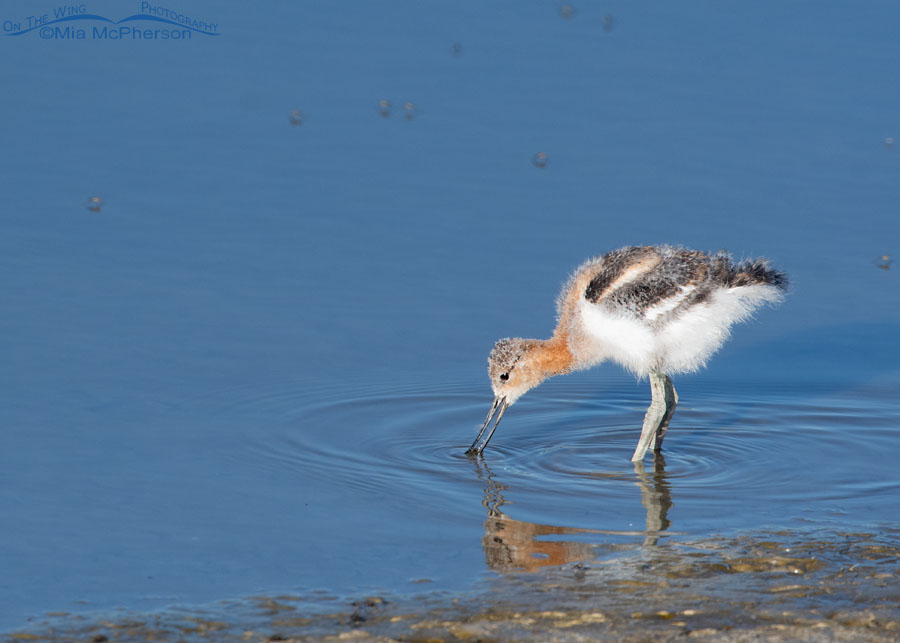 American Avocet chick foraging in water – Nikon D500, f7.1, 1/1250, ISO 500, Nikkor 500mm VR with 1.4x TC, natural light
American Avocet chick foraging in water – Nikon D500, f7.1, 1/1250, ISO 500, Nikkor 500mm VR with 1.4x TC, natural light
I spent part of my morning yesterday photographing American Avocet and Black-necked Stilt chicks from the auto tour route at Bear River Migratory Bird Refuge and it was a blast watching these young shorebirds. I had thought I might miss seeing the chicks of these two species at this stage of their lives because of the time I spent back East but happily I was wrong and I took several hundred images of the avocet and stilt chicks as they foraged, preened, rested and went about the business of young shorebirds learning to live in their marshy world.
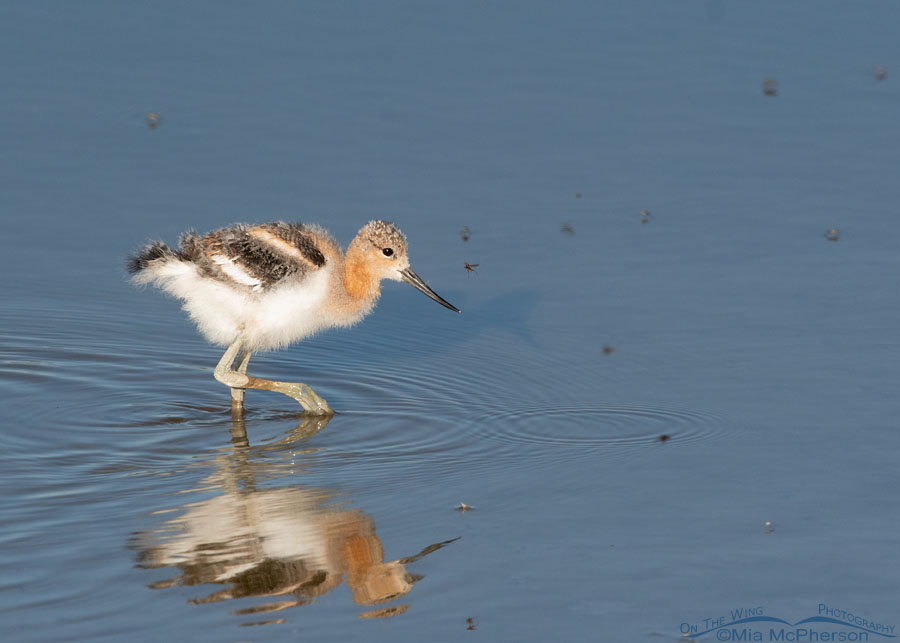 American Avocet chick with a midge – Nikon D500, f7.1, 1/1600, ISO 500, Nikkor 500mm VR with 1.4x TC, natural light
American Avocet chick with a midge – Nikon D500, f7.1, 1/1600, ISO 500, Nikkor 500mm VR with 1.4x TC, natural light
The water has been drawn down at the refuge again this year for phragmites mitigation and that has provided plenty of areas where the water is shallow enough for these young shorebirds to forage that are close to the edge of the auto tour route. I was a bit shocked yesterday to see how little water there was in Unit 2 compared to my last visit there on June 23rd. The draw down of water might be great for the shorebirds but I don’t think that is the case for the grebes that nest at the refuge because they build their floating nests in the water.
It was a delight to watch this American Avocet chick foraging in the shallow water under the watchful eye of its nearby father. I didn’t realize I had also captured a midge in this photo above the avocet chick’s bill until I got home and viewed the image on my monitor. They sure have fluffy plumage at this stage of their lives!
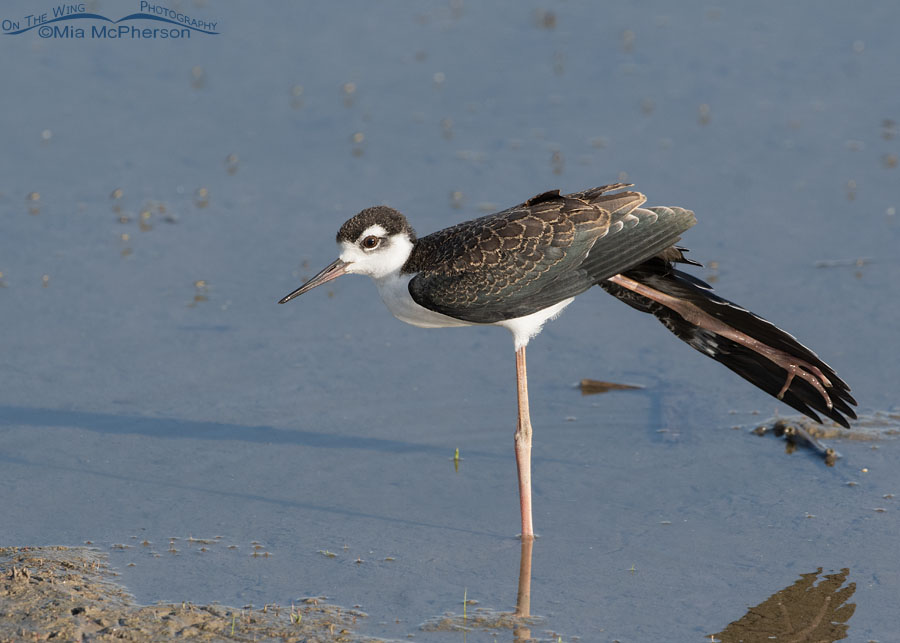 Stretching Black-necked Stilt chick – Nikon D500, f7.1, 1/1000, ISO 500, Nikkor 500mm VR with 1.4x TC, natural light
Stretching Black-necked Stilt chick – Nikon D500, f7.1, 1/1000, ISO 500, Nikkor 500mm VR with 1.4x TC, natural light
Although I saw and photographed fewer Black-necked Stilt chicks yesterday than avocets I was happy to have one that was close to the edge of the auto tour route that spent time foraging, scratching and stretching its wings and legs. Their legs aren’t nearly as long as the legs of adults at this age but it won’t be long before they are. In this photo I can also see a hint of red in the chick’s eye and I presume their eyes will be as red as the eyes of the adults of this species soon.
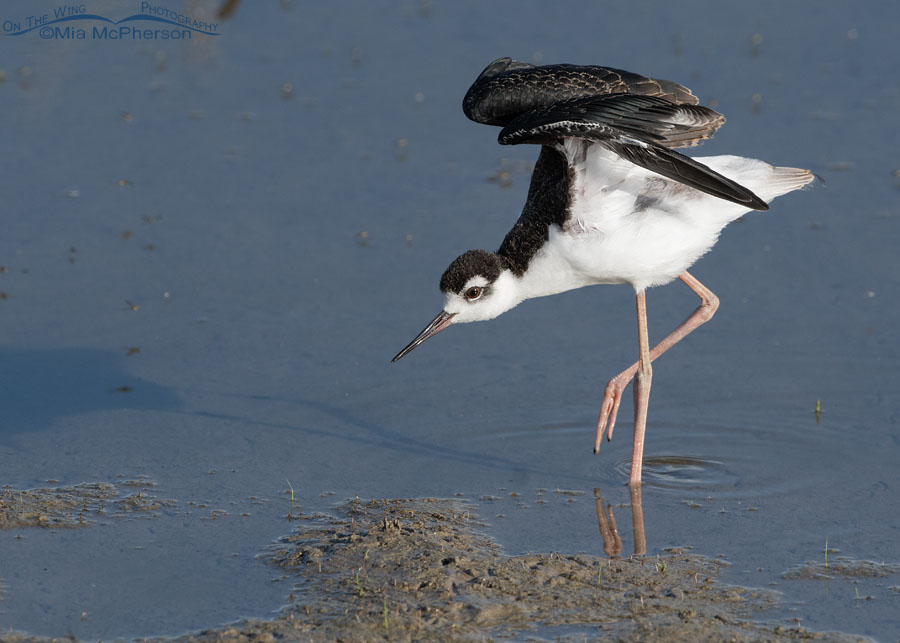 Black-necked Stilt chick wing lift – Nikon D500, f7.1, 1/1600, ISO 500, Nikkor 500mm VR, natural light
Black-necked Stilt chick wing lift – Nikon D500, f7.1, 1/1600, ISO 500, Nikkor 500mm VR, natural light
After the Black-necked Stilt chick stretched its right wing and right leg it lifted its wings above its body too. I had to take my teleconverter off for both of these image because the stilt chick had come in so close. Their little black toenails on their pink feet crack me up!
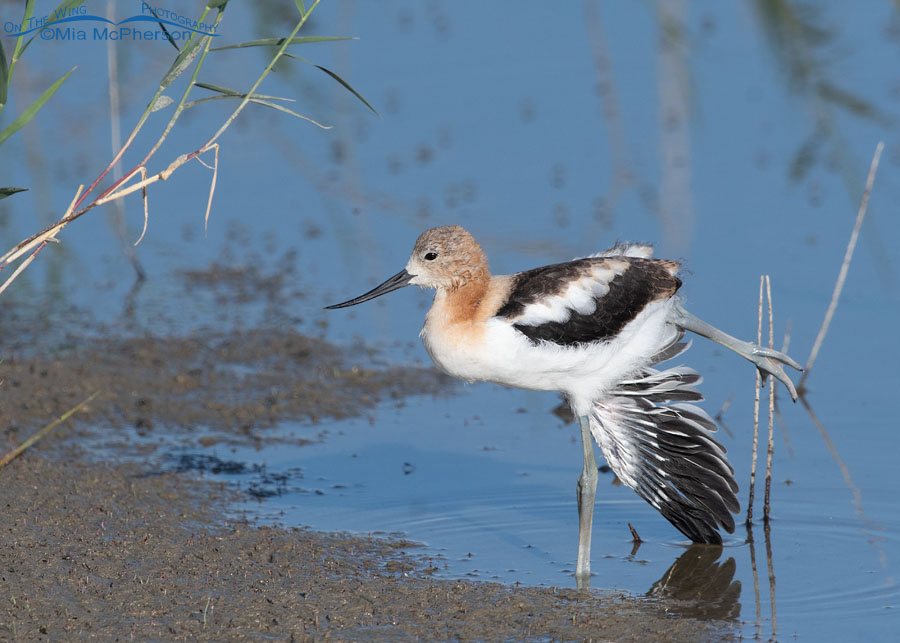 American Avocet chick stretching – Nikon D500, f7.1, 1/2000, ISO 500, Nikkor 500mm VR with 1.4x TC, natural light
American Avocet chick stretching – Nikon D500, f7.1, 1/2000, ISO 500, Nikkor 500mm VR with 1.4x TC, natural light
Not far from where the stilt chick photos above were taken there were also American Avocet chicks actively foraging and feeding, this chick though took some time to preen and stretch and I was able to take a great series of images of it as it did so. I haven’t gone through all of my images from yesterday yet but I bet this little beauty shows up on my blog again in the future.
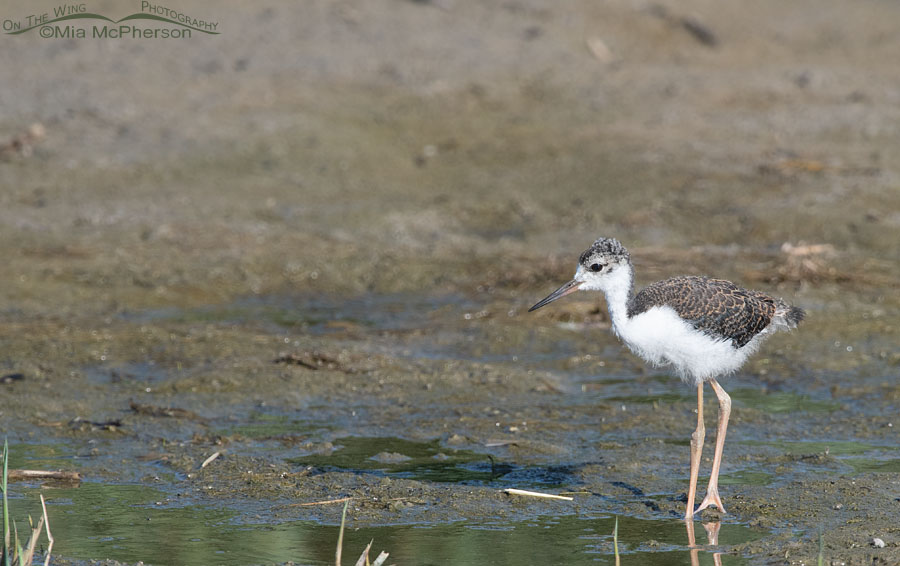 Tiny Black-necked Stilt chick on mud flats – Nikon D500, f7.1, 1/1250, ISO 500, -0.3 EV, Nikkor 500mm VR with 1.4x TC, natural light
Tiny Black-necked Stilt chick on mud flats – Nikon D500, f7.1, 1/1250, ISO 500, -0.3 EV, Nikkor 500mm VR with 1.4x TC, natural light
Further down the auto tour route I was able to photograph another Black-necked Stilt foraging on the mud flats while its father kept an eye on it. This chick was younger than the Black-necked Stilt in the photos above as shown by its fluffier plumage and smaller size. For me the cuteness factor can’t be denied when they are this fluffy.
It does look like the avocets and stilts have had a successful breeding season at the refuge and that is good news.
Life is good.
Mia
Click here to see more of my American Avocet photos plus facts and information about this species. Click here to see more of my Black-necked Stilt photos plus facts and information about this species.


Great photography!
Adorable and I love the stretching poses.
Great series of shots and captions. I sure learn a lot from your posts. Thanks Mia.
So fluffy and cute, I have not seen them this young and it is a delight. Oh, those midges must be a distraction for both the birds and the photographer, but if you took hundreds of images, then it was a morning well spent. Wonderful to see these little darlings, oh my, I think I am gushing!
Definitely cute!
Amazing!!!! You can’t beat the newest version of a creature!
Cute – these are absolutely great shots Mia! Thanks for sharing!